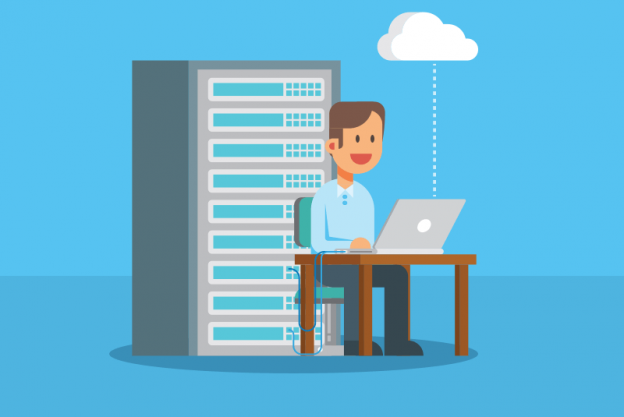Table of Content
- Creation of New User with Administrator Privileges
- Following Examples of Usernames are Worth Trying:
- Setting up of a Strong Password
- Changing Default Remote Desktop Port
- Restriction of Unknown IP Addresses
- Antivirus Installation
- Windows Firewall Protection
- Regular Updates
- Secure VPS with Remote Desktop Gateway
Security of Windows Virtual Private Server is a significant factor during its operation on live public network. Safeguarding your Windows VPS is one of the foremost things that you need to perform immediately after receiving the login credentials. In the following section, you will find relevant steps that need to be implemented for enabling security of Windows VPS.
Creation of New User with Administrator Privileges
Creation of a default admin account during Windows operating system install is a common practice and your Windows VPS server account is no exception to this either. It is strongly advised to disable this default administrator account in order to prevent brute force login attacks by bots as well as automated attacks.
You need to create new user with full administrator permissions. You need to make sure that the new user is not assigned ‘admin’ as new username because the same can be easily hacked due to its vulnerability. Therefore choose an arbitrary username that would be not be susceptible to attacks.
Following Examples of Usernames are Worth Trying:
• admin-Go4hosting,
• Go4hosting-administrator,
• nitin-Go4hosting,
• nitin-admin,
• nitin-192837
In the above list, you can choose any name of individual user-name. The examples are given only as guidelines and need not be used strictly as they are.

Setting up of a Strong Password
Once you have changed default administrator name, then you are supposed to set up a strong password to protect your new administrator account. While choosing a password, you need to make sure that its length is minimum ten characters. You should create a combination of numbers, characters, and letters that are combination of upper as well as lower case. You should always resist using the same password repeatedly and also avoid use of password variations.
Changing Default Remote Desktop Port
Brute force attacks are commonly executed on remote desktop’s default port 3389. This needs to be changed for prevention of such attacks. You can an unknown port to enhance cloud security of your remote desktop from brute force attacks and misuse of server resources.
It is strongly recommended to select a random port number for your remote desktop port. In addition to changing this port number, you need to change default port of applications such as Remote Access software, in case you are using it.
Host based Intrusion Prevention System applications provide added protection against brute force attacks that work incessantly to know your login credentials. This application helps you set number of failed login attempts and blocks the particular IP from accessing your server after the permitted number of failed attempt is exhausted.
Restriction of Unknown IP Addresses
It is a great idea to restrict IP addresses that are unknown from accessing your server. This can undoubtedly enhance protection of your Virtual Private Server. However you need to be careful with use of an internet connection that is having a static IP address. This is because most of the connections including standard home DSL/Cable/ or wireless connections lack static IP addresses and it will result in locking yourself out of your own server environment.
Antivirus Installation
A VPS should be offered protection from a plethora of viruses, malware, adware, and spyware to name a few. This protection is necessary because your server is going to be exposed to cyber threats as soon as you begin its use for uploading or downloading files, and other activities related with browsing.
One of the most recommended antivirus programs is Microsoft’s Security Essentials. It is not only auto-updating software but also provides your VPS a real time security from cyber threats.
Windows Firewall Protection
There is a vast difference between antivirus protection and firewall. Firewall is similar to a security gate at the entrance of your premises with armed security guards. It only allows entry to authorized personnel. Firewall protection is already available as default for Windows Operating Systems in the form of Windows firewall.
Firewall analyses all information that is about to enter the server and then takes the action of either blocking or allowing it into the server’s environment. The extent to which the information can be blocked depends entirely on the settings.
The default policies of firewall must be set as deny all, so that you have the authority of allowing only the information required by you. There is large number of third party firewall systems available to choose from. These are required for handling of sensitive information such as clients’ payment details and so forth. However for routine websites, Windows firewall is more than enough.
Regular Updates
Regular updating of your Windows OS as well as third party applications is of prime significance. Automatic updates save you from hassles of manually performing these tasks. This facility is available for recommended updates and optional updates are installed as per user’s choice. It is better to keep third party applications to a bare minimum. It is easier to update few applications that are essential than to get confused with large assortment of unnecessary third party applications.
Secure VPS with Remote Desktop Gateway
Your VPS can be accessed via web though SSL/TLS with remote desktop gateway. This has to be appropriately and carefully set with assistance from your VPS hosting service provider. Remote desktop gateway is a great advantage for securing connections over secure port 443, since it encrypts the data to be transferred.
Intrusion Prevention Tools
Technique of configuring intrusion detection and prevention is a highly complex process. This needs to be performed by your VPS provider. This is almost identical to a firewall protection and involves analysis of information with regards to real time traffic to your VPS to exclude attack signatures. Snort is one of the most sought after tools in this category.
Implementation of Spyware
Among all types of cyber threats, spyware is probably the most hazardous and harmful infectors. It not only collects information but has the potential of altering your settings or installing unnecessary toolbars, change default hoe page, add bookmarks and more.
Your VPS can get infected by spyware by simple act of visiting some websites and will not be noticed as it shows no symptoms at all but silently collects information such as browsing history, passwords, and even the text that is being typed by you. You can secure your VPS by installing anti-spyware protection.
Conclusion
Security is the most important criteria for stepping into the World Wide Web. VPS server is similar to our home and we need to take all necessary steps to protect it from harmful intruders. The steps mentioned in this article are capable of protecting your Windows VPS against common hazards.






 Live Chat
Live Chat